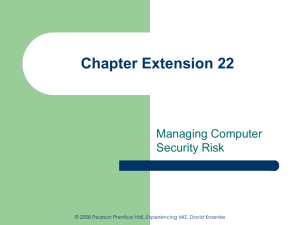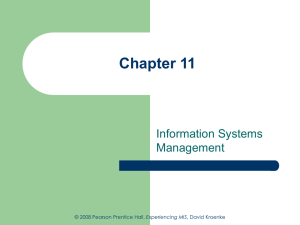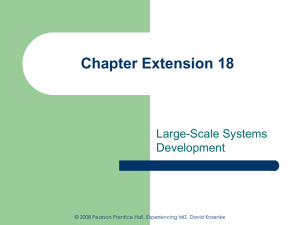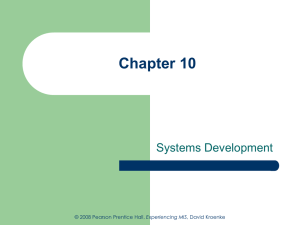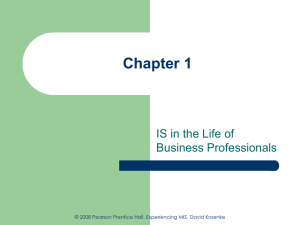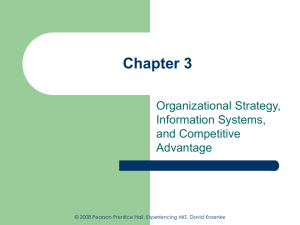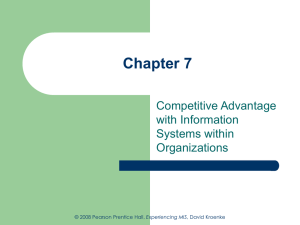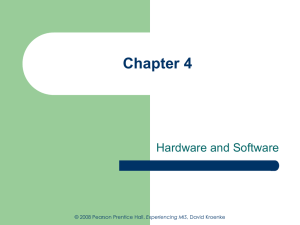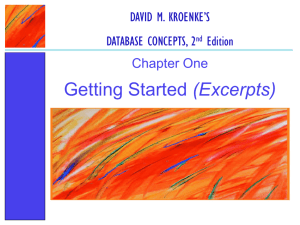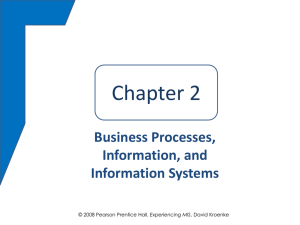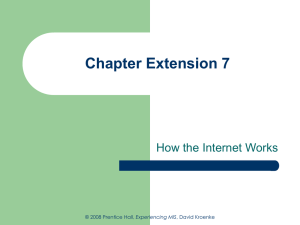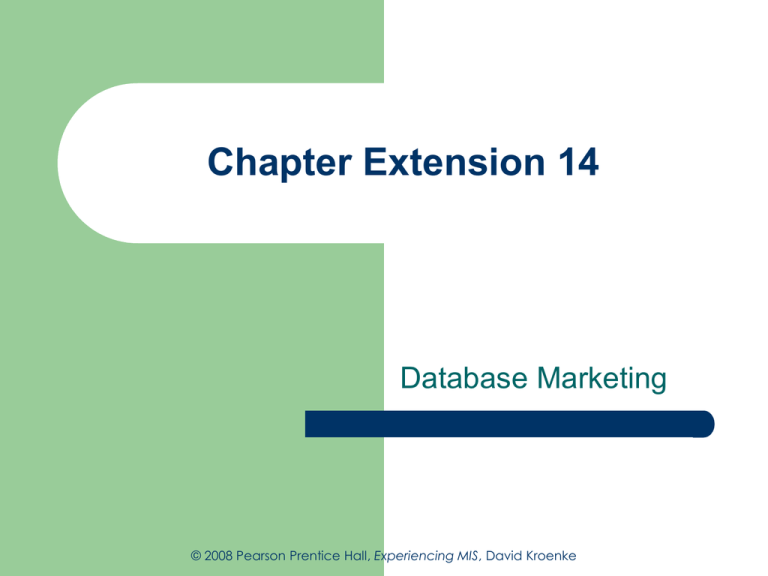
Chapter Extension 14
Database Marketing
© 2008 Pearson Prentice Hall, Experiencing MIS, David Kroenke
Study Questions
CE14-2
What is a database marketing opportunity?
How does RFM analysis classify customers?
How does market-based analysis identify
cross-selling opportunities?
How do decision trees identify market
segments?
© 2008 Pearson Prentice Hall, Experiencing MIS, David Kroenke
What Is a Database Marketing
Opportunity?
Database marketing
–
–
–
CE14-3
Data business intelligent systems applied to
planning and execution of marketing programs
Databases key component
Data-mining techniques also important
© 2008 Pearson Prentice Hall, Experiencing MIS, David Kroenke
RFM Analysis
RFM:
–
–
–
Program that analyzes and ranks customers
according to purchases
–
–
CE14-4
How recently customers ordered
How frequently
How much money they spent per order
Programs first sorts for recent purchases and
ranks customers
Divides into five groups
© 2008 Pearson Prentice Hall, Experiencing MIS, David Kroenke
RFM Analysis, continued
–
–
–
CE14-5
Assigns R score of 1 through 5
Score determined by which percentage group
customer is in
Repeats with frequency (F score) and money (M
score)
Assists companies in determining which
customers to service
© 2008 Pearson Prentice Hall, Experiencing MIS, David Kroenke
Example of RFM Score Data
Figure CE14-1
CE14-6
© 2008 Pearson Prentice Hall, Experiencing MIS, David Kroenke
Market-Basket Analysis
Data-mining technique
Determines sales patterns
–
–
–
Support
–
Conditional probability estimate
Lift
–
CE14-7
Probability that two items will be bought together
Confidence
–
Shows products that customers buy together
Estimate probability of customer purchase
Creates cross-selling opportunity
Ratio of confidence to base probability of buying item
© 2008 Pearson Prentice Hall, Experiencing MIS, David Kroenke
Market-Basket Example
Figure CE14-2
CE14-8
© 2008 Pearson Prentice Hall, Experiencing MIS, David Kroenke
Decision Trees
Hierarchical arrangement of criteria
Predicts classification or value
Creating the decision tree
–
–
Gather data and attributes
Select attributes that create disparate groups
CE14-9
More different the groups, the better the classification
Transform into set of decision rules having format
“if/then”
© 2008 Pearson Prentice Hall, Experiencing MIS, David Kroenke
Decision Tree
Figure CE14-3
CE14-10
© 2008 Pearson Prentice Hall, Experiencing MIS, David Kroenke
Decision Tree for Loan Evaluation
Common business application
Classify loans by likelihood of default
Rules identify loans for bank approval
–
–
–
CE14-11
Identify market segment
Structure marketing campaign
Predict problems
© 2008 Pearson Prentice Hall, Experiencing MIS, David Kroenke
Credit Score Decision Tree
Figure CE14-4
CE14-12
© 2008 Pearson Prentice Hall, Experiencing MIS, David Kroenke
Active Review
CE14-13
What is a database marketing opportunity?
How does RFM analysis classify customers?
How does market-based analysis identify
cross-selling opportunities?
How do decision trees identify market
segments?
© 2008 Pearson Prentice Hall, Experiencing MIS, David Kroenke

